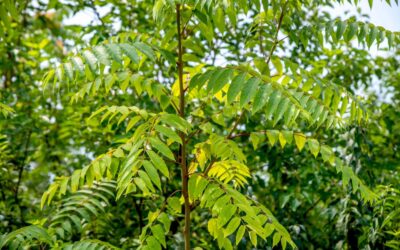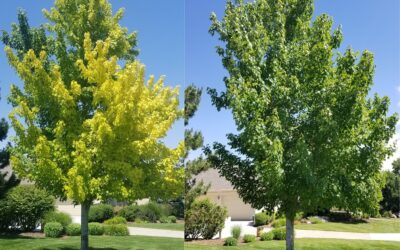Hoss and Little Joe may have roamed the Ponderosa in Nevada, but the Ponderosa pine is right at home along Colorado’s Front Range. In fact, it’s the most widely distributed pine in North America, covering vast areas of the western US including 2 million acres in Colorado. The Nature Conservancy considers it one of the five most iconic trees of the state. It plays a vital role in Colorado’s drinking water supply, especially in the heavily populated areas of the Front Range. Its thick foliage and carpet of needles hold snow and moisture, tempering runoff and making the Ponderosa pine a high priority for conservation and forest management.
Characteristics of the Ponderosa Pine
The Ponderosa pine is a large, fast-growing, long-needled coniferous tree that can grow over 200 feet tall in forests. In landscapes, it tops out between 50 and 80 feet with a spread of 30-40 feet. It’s very cold hardy, preferring moderate moisture and full sun, but adapts well to high temperatures and occasional periods of drought.
The needles are bright green, long, and flexible. Young trees have black/brown bark that changes to broad plates of red-orange at maturity. The bark of mature trees is very thick, offering good protection against low-intensity fires. Ponderosa pines have a very deep taproot, drawing underground moisture and making them extremely wind-resistant.
Gelechiid moth caterpillars feed on Ponderosa pine needles and Mountain Pine Beetles can introduce blue stain fungus. Both can cause significant damage when not treated.
Ponderosa pine naturalizes around 5,000 feet as the plains rise into foothills and extend into higher mountain forests up to 9.000 feet. It offers habitat for a huge variety of wildlife including birds, squirrels, chipmunks, bobcats and mountain lions. While some pines have a turpentine smell, Ponderosa pines can give off a vanilla-like aroma.
Varieties and Cultivars of Ponderosa Pine
Ponderosa pines come in five subspecies. The Rocky Mountain Ponderosa pine is most common in Colorado, but any variety can be grown successfully along the Front Range.
The Ponderosa Pine as a Landscape Tree
Because of its size, the Ponderosa pine should be planted in large open areas and is unsuitable as a street tree. Single trees make majestic specimens. They drop needles heavily and shade lawns below, so it can be advisable to incorporate that into your landscape plan rather thin fighting to keep grass alive near the trunk. They drop lots of large cones, too, but they’re easy to collect and fit nicely into fall and holiday wreaths and other décor. If planting as a border or windbreak, the trees should be spaced about 15 feet apart.



